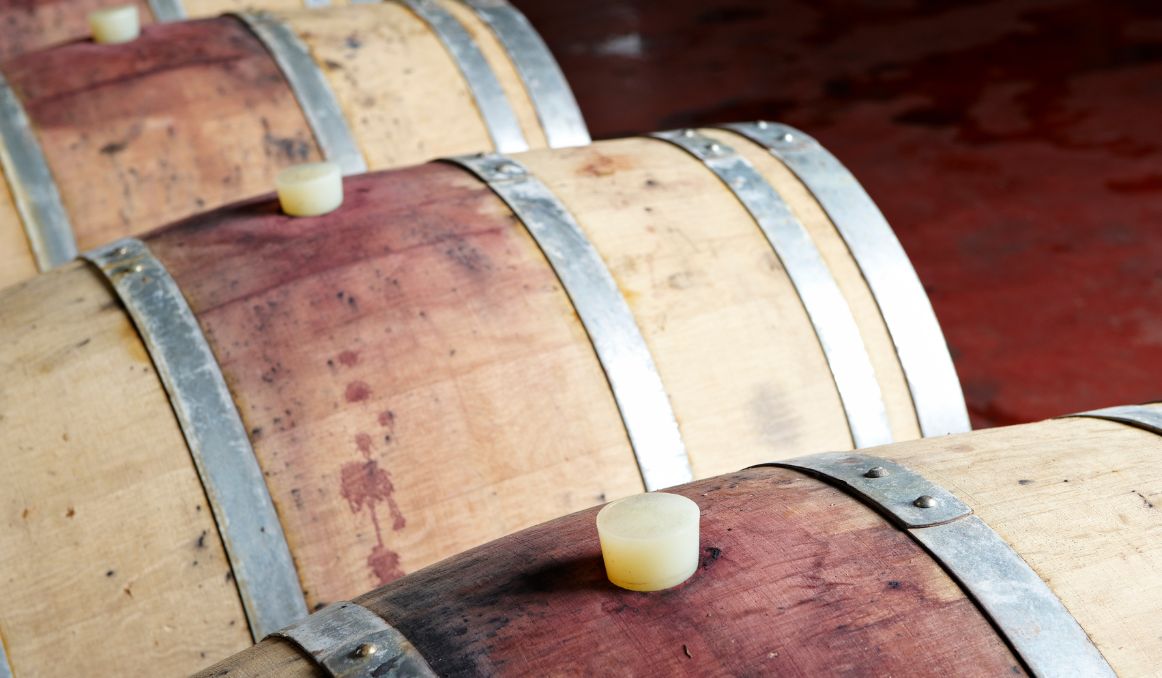What Does Racking the Wine Mean?
What does racking wine mean? Well, when it comes to making wine, the process has gotten much more complex than it was even a few hundred years ago, and certainly a few thousand years ago.
But, unlike in many cases, this complexity is not necessarily a bad thing, while some would argue that it’s not always necessary.
It really comes down to taste and preference.

History of Wine
In the beginning, wine was beyond simple. It was, indeed, likely a happy accident. Something even monkeys could do.
No, really.
Anthropologists have found that monkeys in the wild will wait for fruit to ripen and even rot before eating it.
Why?
Wine!
Think about it.
Yeast, that wonderful and oh so essential ingredient in all fermented beverages is hovering at all times in virtually all places, just waiting to serve a single critical function both for them and for those of us who love fermented foods and beverages.
Yeast, a single celled, eukaryotic, living organism, is one of the oldest life forms on earth. It is a member of the fungus family, and fungus is actually the oldest living organism on our planet.
Yeast evolved with one job: find sugar and convert it to alcohol and carbon dioxide.
And it has been very good at its job since its inception, as far as we know.
And those monkeys have been quite grateful for it.
Yeast hones in on virtually any sugar in the environment and gets right to work fermenting. So fruit on a tree that falls and then nears rotting is making more and more natural sugars in that process.
From Monkeys to Men
So those monkeys discovered that if they wait long enough, they can catch quite a buzz from the rotten, fermented fruit on the jungle floor.
Anthropologists later found tribes of monkeys that will actually collect palm sap and leave it out to sit for days, waiting for fermentation to take place. They will then have drunken weekends, even fighting over the last dregs of alcohol left.
Is it any wonder then that humans have had wine for likely as long as we have been humans, and perhaps even longer?
It is not a far stretch to imagine that the earliest process of making wine evolved along with us from our ancestors somewhere along with the missing link.
Because it was so simple, right?
Crush grapes, leave the juice out for several days, filter out the skins and stems, and drink it.
It is perhaps the easiest among all of the fermented beverages in the world.
Of course, because humans it seems are inherently prone to improving upon and even perfecting everything we do, we have now made the situation more complex.
And hooray for that.
First, we realized that we could actually grown harvest grapes. We did not have to simply happen upon grapes and hope for the best.
Wine grapes tend to be dramatically sweeter than table grapes because we want all those extra sugars in the fruit to make the yeast happy and drive our alcohol content up higher.
So grapes were selected for their sweetness, for their ability to ferment, for their individual tastes, and so on.
Then, it was discovered that we could do white wine from green grapes.
Next, we built in blends, developed rose wines, and a vintner in a city in France even invented bubbly wine called Champagne.
Eventually, winemakers discovered they could crop and cultivate their own yeast, and now they had virtually total control over the winemaking process.
But, about that yeast…
Yeast and Racking

You see, yeast kind of has a mind of its own. It is, after all, a live and active organism. It simply does its job, consuming all the sugar, converting it to alcohol and carbon dioxide, and then lying dormant in the vessel, at the top the wine, in what is called flocculation, until it is either repitched or discarded, to start the process all over again.
But what if you want to control fermentation?
That is where racking comes in.
Wine makers seeking to control the fermentation process began waiting until primary fermentation was done and then draining the wine out of the fermentation vessel to ensure completion.
Racking wine is simply that: removing the wine from the original vessel and putting it into another vessel, usually a barrel, and cropping out the yeast.
This process halts fermentation for the most part, and allows winemakers to remove all the debris from the wine, stems, skins, seeds, and yeast.
However, there is still going to be microscopic yeast in the wine that will continue very slow fermentation, and the more you expose the wine to oxygen, the better you chance you have of developing a fuller bodied wine.
So many vintners will rack their wine multiple times.
That first racking is just to stop primary fermentation.
The second racking, and all rackings thereafter until bottling, can be done for a variety of reasons.
Much of it has to do with what the residual yeast is doing in the wine.
For example, yeast without sugar left to consume will often consume dead yeast cells and other micronutrients in the wine that create off flavors that reek of baby vomit or rotten eggs.
The longer you allow for secondary fermentation, the better off you are off having a wine that has fully developed and fully resolved those off flavors.
Typically, vintners who plan to produce wine that will age for much longer and that will attract wine collectors who plan to put their bottles in a cellar for years will rack fewer times, while winemakers who know their wine will sell and be drunk relatively quickly tend to oxygenate their wine more often, racking it multiple times.
In the end, it really is a matter of preference, and, as the monkeys, and our ancestors could tell you, if they were here with us today, you can’t really get it wrong.
Cheers!
If you’re interested in finding out how you can use our technology to control fermentation and monitor your yeast, save work hours and improve the cost-efficiency of your business, drop us a line at [email protected] or check out the product page:
Also, you can now get access to a fully functional demo account to test our Web App. Completely free of charge and with no commitment to purchase.
Sources:
1. https://youngberghill.com/blog/wine-racking/
2. https://www.winemag.com/2022/02/22/racking-wine-term-define/


